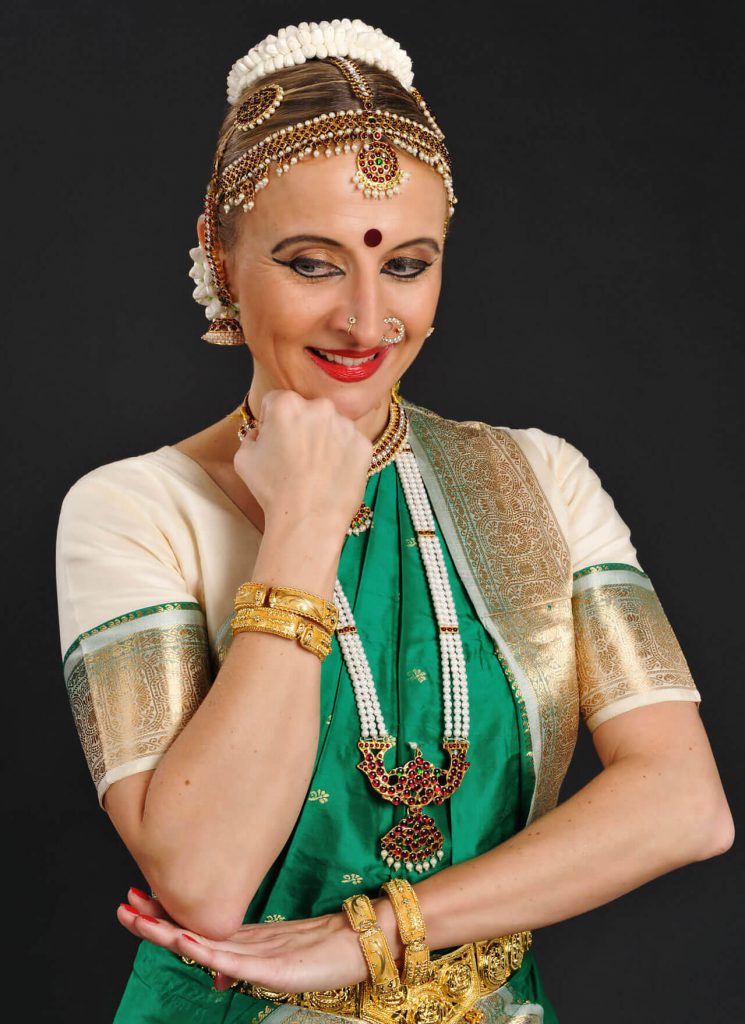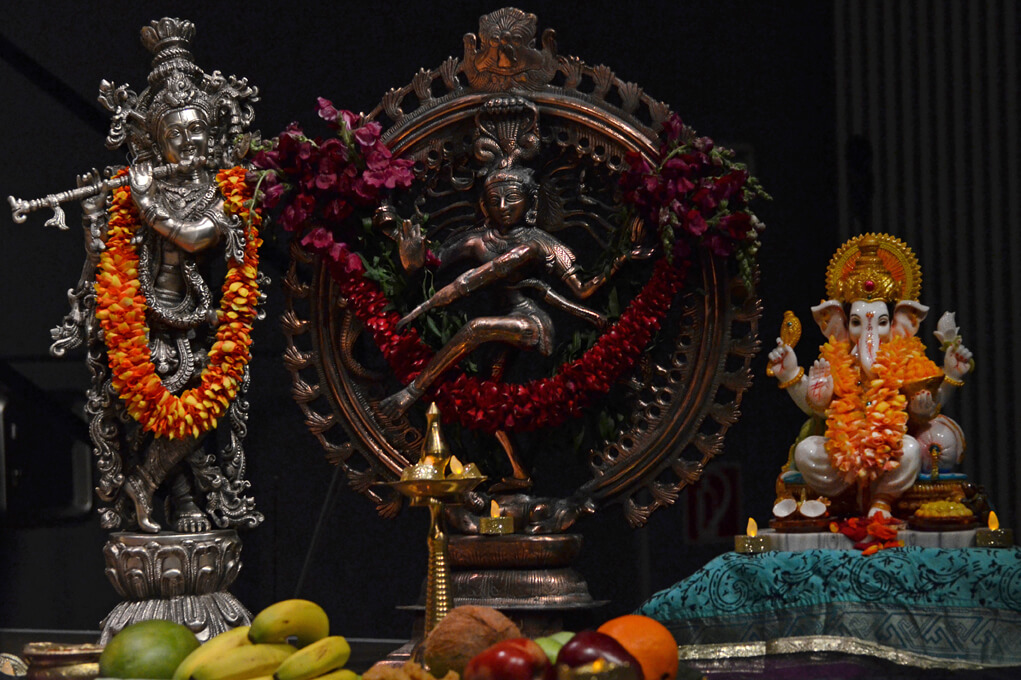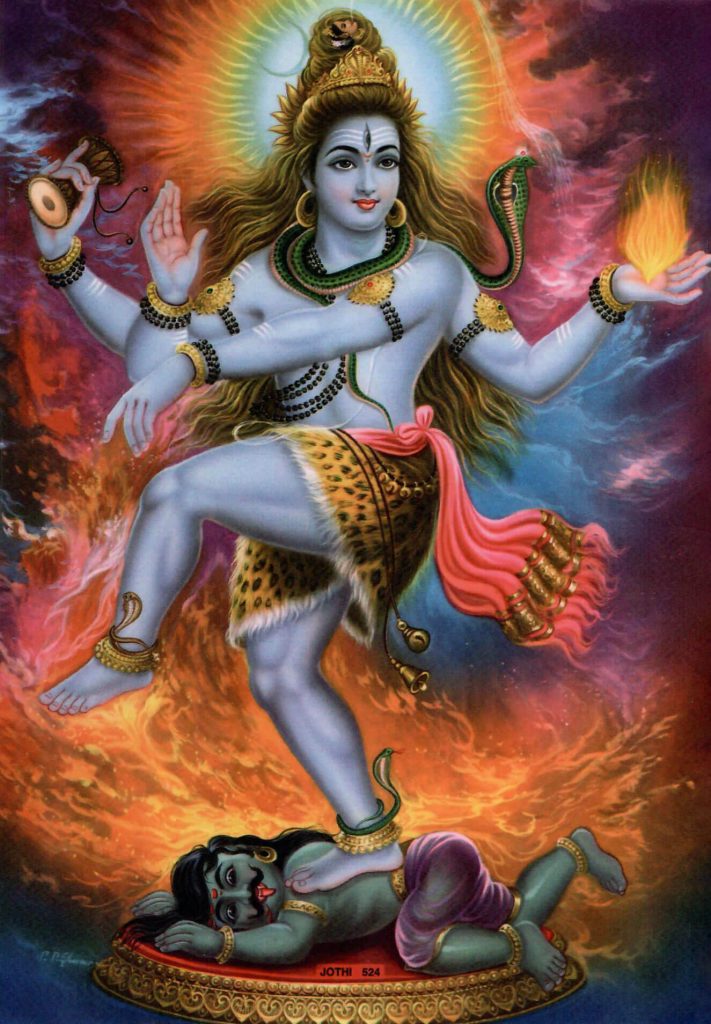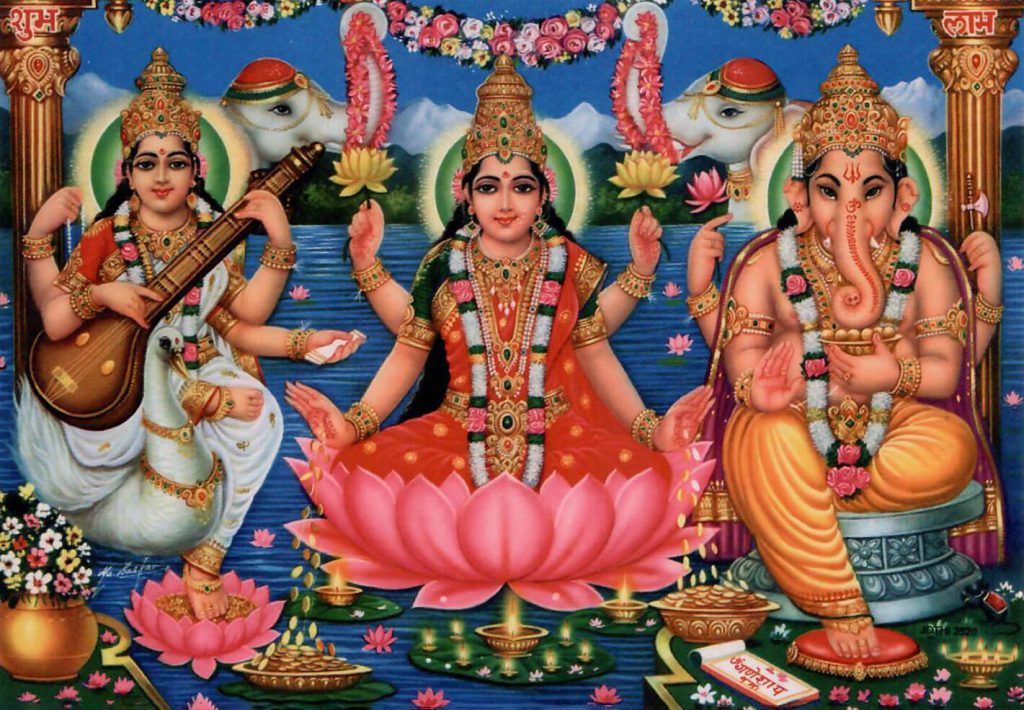” This dance is the highest form of yoga.”
Mythili Prakash

Bharatanatyam is a temple dance from Tamil Nadu in South India. Its roots reach back more than two thousand years in Indian history and culture. Today the art form can be seen on stages all over the world. It’s dynamic, expressive and powerful. The dance is characterized by clear lines and endpoints in its movements, the rhythmical foot work as well as jumps, kicks and turns. It’s danced by men and women. The term “Natya” refers to dance, drama and music, the term “Bharata” is a synonym for India. Consequently Bharatanatyam can be translated into English as “the dance of India”. Formerly Bharatanatyam was danced by the Devadasis in the temples, who thus worshipped the gods and taught the devotees the Hindu myths. The Devadasis were highly respected temple dancers, who were experts in Sanskrit and other languages to be able to interpret the poetry in the compositions to which they danced.
The dance, costume, jewellery, hairstyle and make up are exactly specified in the Natya Shastra, one of the oldest scripts on the performing arts, which is also considered as the fifth book of the Vedas. The education of an Indian classical dancer requires a continuous training and concentrated study over a time span of several years. A teacher therefore needs to be well-versed not only in dance techniques, but also in South Indian Carnatic music, especially in the rhythms which he/she establishes with the Nattuvangam, the cymbals, which the dancer follows, as well as in the poetry, the languages of the dance items and in Hindu mythology.
Lord Shiva manifested as Nataraja is worshipped as the Lord of cosmic dance. He is the highest symbol of cosmic energy and stands for creation, preservation and destruction. The home of the Nataraja is the Chidambaram temple in Tamil Nadu. Classical dance in India is seen as the purest and most beautiful expression of the human mind.
At the time when Bharatanatyam was established as an art form at the royal courts, the Devadasis lost their well-respected status in society. Nevertheless as artists they were still cherished and supported by the Maharajas. In the first half of the 19th century the dance tradition was for the first time systematized by four talented brothers and musicians, known as the famous Tanjore Quartet. But the once highly appreciated dance fell into disrepute under the British colonial rule and was finally banned.


At the beginning of the 20th century the precious temple dance was revived thanks to the legendary dancer Rukmini Devi Arundale and the lawyer and dancer Shri E. Krishna Iyer and Bharatanatyam experienced a renaissance as a stage art. The world-renowned Kalakshetra Foundation in Chennai, Tamil Nadu, the major dance academy for Bharatanatyam in India, was set up by Rukmini Devi. She implemented a lasting structure and categorization of the dance to ensure clarity and to carry the invaluable knowledge into the future. Today’s dance style in Kalakshetra is rooted in the Pandallanur style which along with the Vazhavur and Tanjavur styles are the three main types of the dance form. However Bharatanatyam in India is diverse and the world of art presents fascinating dancers of different schools.
The choreographies are categorized in three types: Nritta is pure dance, Nritya is Abhinaya combined with dance and Natya is pure Abhinaya, pure dance theater. A full repertoire, which a student accomplishes after mastering the Adavus, consists of an opening item, a flower offering, followed by Alarippu, in which the dancer, like a blossoming flower, presents the basic dance techniques in the three speeds. The third is called Jatiswaram, a pure dance item. The next is Shabdam, the first item in the repertoire displaying dance and Abhinaya, the expression mainly of eyes and face, which along with the Mudras is used to tell stories from the Hindu mythology.
The highlight is the Varnam which today lasts between 20 and 30 minutes. After that follows the Keerthanam, a Nritya item, and the Padam, a pure Abhinaya choreography. The crowning finale of the repertoire is the Thillana, a dynamic pure dance item which only contains a short sloka. The compositions are based on the Carnatic music system which works with various melodic modes, the Ragas, and rhythmic cycles, the Talas. One of the core proverbs, the Natyakrama Sloka taken from the Abhinaya Darpana, a script on Indian dance dated back to the fourth century, says in phonetic transcription: “Yatho Hastha Thado Drishti. Yatho Drishti Thado Manaha. Yatho Manaha Thado Bhava. Yatho Bhava Thado Rasaha.” It means: Where the hand goes, the eyes follow. Where the eyes go, the mind follows. Where the mind goes, Bhava (expression) follows. When Bhava is there, Rasa (flavour) is born. Rasa is the emotion which is conveyed to the audience by the expression of the dancer. This is the intention of Abhinaya.

